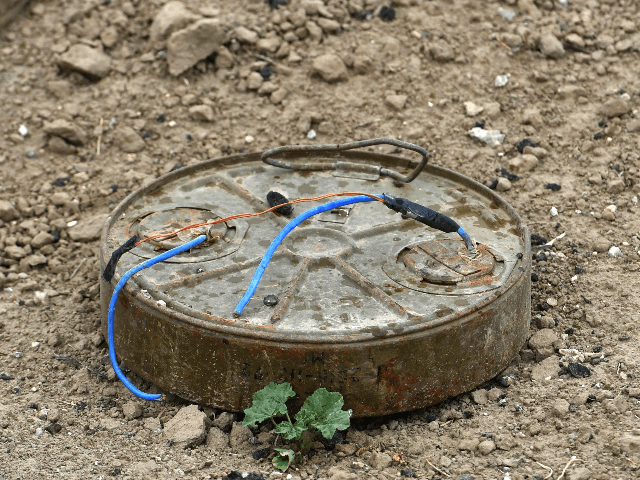The United Nations Mine Action Service (UNMAS) warned on Sunday that roughly 70 percent of the land mines, improvised explosive devices, and other hazards created during the Islamic State’s occupation of Iraq remain undiscovered. UNMAS said these lurking hazards were a major impediment to displaced Iraqis returning to their homes.
“The scale, density, and complexity of explosive hazards is unprecedented, making Iraq one of the most contaminated countries in the world,” UNMAS said on Sunday.
“Our primary mandate is to facilitate the safe and voluntary return of IDPs [Internally Displaced Persons] to their homes. We cannot do that when an estimated 70 percent of explosive hazards still lie underneath the rubble,” UNMAS project manager Pehr Lodhammer said.
The U.N. agency called for extensive “risk education” of the local population, using everything from television programs to public-service messages on taxicabs and water bottles to teach returning Iraqi citizens how to safely navigate the ruins of cities formerly held by ISIS and deal with any explosives they find.
UNMAS extended particular gratitude to the United Kingdom for its assistance with clearing explosive devices and managing contaminants released by explosions. Lodhammar noted that Iraqi teams are handling most of the painstaking and dangerous work of searching ISIS territory inch-by-inch for booby traps and unexploded ordnance.
“The unsung heroes here are the Iraqis. The international staff provides technical advice but the actual workers who are carrying out this highly dangerous work are Iraqis,” Lodhammar said.
According to the Kurdistan Regional Government (KRG), about 1.2 million internally displaced persons remain in the semi-autonomous Kurdistan region. International agencies believe a total of about 1.7 million Iraqis remain displaced from their homes by the war against ISIS. Refugees make up about half the population of some districts within the Kurdistan region.
The situation is much the same in the territory formerly held by ISIS in Syria. The Kurdish-led Syrian Democratic Forces discovered in March the last area liberated from ISIS dead-enders was “full of all kinds of explosives.”
In addition to landmines and booby traps, the militants left behind a large number of undetonated suicide vests. The Islamic State in both Syria and Iraq made extensive use of car bombs, formally known as Suicide Vehicle-Borne Improvised Explosive Devices (SVBIEDs), and left behind numerous vehicles rigged with bombs when they withdrew or surrendered.

COMMENTS
Please let us know if you're having issues with commenting.